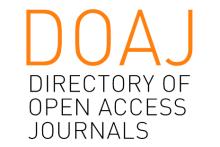Resource information
The ecosystems of our intensively used European landscapes produce a variety of natural goods and services for the benefit
of humankind, and secure the basics and quality of life. Because these ecosystems are still undergoing fundamental changes,
the interest of the society is to know more about future developments and their ecological impacts. To describe and analyze
these changes, scenarios can be developed and an assessment of the ecological changes can be carried out subsequently. In the
project „Landscape Saxony 2050“; a methodology for the construction of exploratory scenarios was worked out. The presented
methodology provides a possibility to identify the driving forces (socio-cultural, economic and ecological conditions) of the
landscape development. It allows to indicate possible future paths which lead to a change of structures and processes in the
landscape and can influence the capability to provide ecosystem services. One essential component of the applied technique is
that an approach for the assessment of the effects of the landscape changes on ecosystem services is integrated into the developed
scenario methodology. Another is, that the methodology is strong designed as participatory, i.e. stakeholders are integrated
actively. The method is a seven phase model which provides the option for the integration of the stakeholders‘ participation at all
levels of scenario development. The scenario framework was applied to the district of Görlitz, an area of 2100 sq km located at
the eastern border of Germany. The region is affected by strong demographic as well as economic changes. The core issue focused
on the examination of landscape change in terms of biodiversity. Together with stakeholders, a trend scenario and two alternative
scenarios were developed. The changes of the landscape structure are represented in story lines, maps and tables.
On basis of the driving forces of the issue areas „cultural / social values“ and „political control“, three scenarios were developed
up to the time horizons in 2030 and 2050. They are titled „Trend“, „Tradition and Ecology“ and „Technology and Energy“. These
scenarios differ markedly in the degree of the future lignite exploitation, in the use of renewable energy and in the environmental
compatibility of the agricultural production.
In total, the investigation shows that the integration of the ecosystem services approach into the scenario technology has brought
new aspects. However, the procedure became more complex.
For the development of the scenarios a precise definition of the driving forces turned out to be essential. The experiences of the
project further show that only two or at most three key driving forces (KDF) can be distinguished really sensibly or can be looked
at in their interactions.
It could be shown that from these results itself concrete measures can be derived which support desirable developments or
counteract against undesirable effects. By the integration of stakeholders in different working steps, the scenarios can contribute
to the sensitization and better perception of future problems and chances of a region.



